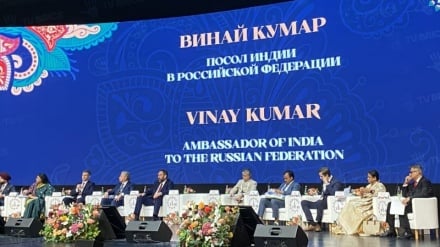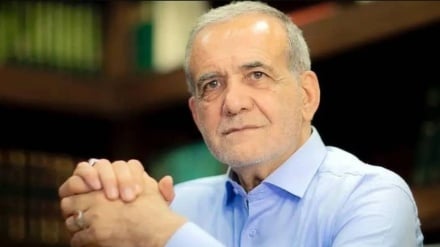India’s vanishing nuclear scientists
Nuclear scientists were among the world’s most coveted assets during and after World War II, so much so that powerful nations engaged in a tug-of-war on the European playground to claim as many as possible.
Here’s an article which appeared on Asia Times website, titled, “India’s vanishing nuclear scientists”, by Pitamber Kaushik Indian independent journalist, columnist and researcher, who points to the assassinations of Iran’s nuclear scientists by agents of the US and Israel, and says Indian nuclear scientists might have also been the victims of the CIA.
When you are in one of the two neighboring nuclear powers like Pakistan and India, each struggling to achieve martial rivalry over the other two, being a nuclear scientist is an enormous and complicated responsibility. And so one might expect them to operate from the shadows.
India’s scientists have come under fire, both literally and figuratively. Some believe their targeting may even have begun with the “father of India’s nuclear program,” Dr Homi Jehangir Bhabha, a multiple Nobel nominee and founding director of the Tata Institute of Fundamental Research. He was a passenger on Air India Flight 101, which crashed into Mont Blanc on January 24, 1966, killing 117 passengers and crew members. Accident investigators blamed the crash on poor communications between the flight deck and air traffic controllers.
Dr Bhabha’s death came a mere 13 days after the death of India’s second Prime Minister Lal Bahadur Shastri, under mysterious and ill-investigated circumstances. The prime minister, perturbed by China’s 1964 nuclear tests, had asked Bhabha if Indian scientists could manage an underground test. Bhabha had just publicly stated that India could produce a nuclear device in a short time.
Former CIA operative Robert Crowley, in telephone interviews with journalist Gregory Douglas, claimed that the US Central Intelligence Agency was responsible for “eliminating” both Bhabha and Shastri. The transcripts of these conversations were published in a book titled “Conversations with the Crow”.
Right-to-information (RTI) activist Chetan Kothari filed a PIL (Public Interest Litigation) in Bombay High Court asking the government to constitute a special investigative team to probe the mysterious deaths of nuclear scientists and engineers between 2010 and 2014. A large number of these deaths have been categorized as “unexplained.”
In 2013, two chief engineers assigned to India’s first nuclear-powered submarine INS Arihant, K K Josh and Abhish Shivam, were found lying on railway tracks by workers. Although saved from being run over by a train, they were found to be already dead. Relatives said that no visible signs of injury were apparent, an assertion backed up by the police. It was suggested that they might have been killed elsewhere, perhaps poisoned, before being put on the tracks to make their deaths appear accidental or as the result of suicides.
The Ministry of Defense and the media have dismissively described the incident as a routine accident, and further investigations have been ruled out. Only ordinary police were assigned to look into the case, which was deemed inconclusive.
The petition to Bombay High Court states, “In any other country, the murder of two engineers connected to a crucial strategic programme would have created a media storm. When nuclear scientist Lokanathan Mahalingam’s body turned up in June of 2009, it was palmed off as a suicide and largely ignored by the Indian media.”
In April of 2011, a 63-year-old former scientist and former head of the Indian Women Scientists’ Association, Dr Uma Rao, was found dead at her residence near a Bhabha Atomic Research Center (BARC) campus. While her death was judged a suicide, her family members contested the verdict, deeming the probe unsatisfactory.
The petition claims that deaths not classified as suicide are generally, and conveniently, labeled as “unexplained.”
A prime example is the case of M. Iyer, a BARC engineer who was found dead at his residence in South Mumbai. He was found to have internal hemorrhaging to his skull which, according to a police officer, was “possibly the result of a kinky experiment”. No arrests were made.
The petition states: “After a preliminary look-in, the police couldn’t work out how Iyer had suffered internal injuries while not displaying any cuts or bruises, and investigations fizzled out.”
In all such unexplained deaths of scientists and engineers, fingerprints are mostly absent, hinting at a high level of proficiency and craftiness on the part of others who may allegedly have been involved in the killings. Other telltale marks, normally used by forensic scientists to explain deaths and identify culprits, are often missing.
In the case of Iyer’s murder, the petition states, “The killer had used a duplicate key to enter the house and strangle the engineer in his sleep. Interestingly, efforts were made by some of the investigating police officers to pass the death off as a suicide.”
According to the Indian government, over a three-year period, at least nine unnatural deaths of scientists and engineers have occurred just at the BARC, as well as at the Kaiga nuclear facility. Two of these have been categorized as suicide, while the rest remain “unexplained.”
The petition further states:
“The most pressing issue isn’t who might be behind the murders, but that the Indian government’s apathy is potentially putting their high-value staff at even greater risk. Currently, these scientists, who are crucial to the development of India’s nuclear programs, whether for energy or security, have absolutely no protection at all, which is quite amusing for people who are in such a sensitive program.”
Between 2009 and 2013, a minimum of 10 employees in the Department of Atomic Energy perished in murders and mysterious fires.
The deaths, all of them mysterious, have been connected by one common thread: the murder victims were all associated with nuclear energy. They have otherwise been quite varied and widespread, both geographically and institutionally. While scientist Uma Rao and employee Ravi Mule were from the Nuclear Power Corporation, 24-year-old scientist Mohammad Mustafa was found dead with slit wrists at the Center for Atomic Research Kalpakkam. Two other young researchers, Umang Singh and Partha Pratim Bag, were burned to death in a BARC lab that reportedly contained no flammable materials; 47-year-old senior scientific officer L Mahalingam was working at the Kaiga Atomic Power Station, while M. Iyer was a mechanical engineer of the BARC reaction group.
Kothari has claimed in his PIL that hundreds of nuclear scientists posted to various nuclear establishments across the country have died mysteriously in the last 15 years – many of these fatalities being classified by investigating authorities either as suicides or as “unexplained deaths.” Ravi Mule’s family had also requested a probe, alleging abject police apathy.
Kothari notes that the BARC has reported no fewer than 680 employee deaths during the last 15 years. The Baroda Heavy Water Plant reported 26 deaths, and plants at Kota and Tuticorin reported 30 and 27 deaths respectively in the same period. During this period 92 persons employed with the Indira Gandhi Centre for Atomic Research Kalapakkam, have died, and an RTI query by the petitioner found 16 of those deaths to have been suicides. The suicide rate of India as a whole is approximately 1 in 10,000, while the death rate is 7 in 1,000, which means the ratio of suicides to the death rate in India is 1 approximately 70. So of course one or two of the 92 deaths could have been suicides.
The questions, however, were investigations into these deaths casual or hasty, or were insidious forces at work?
Moreover, nuclear scientists suffer another much more obvious threat to their well-being. A total of 69 of the aforementioned deaths at the BARC were directly attributed to cancer, while the rest were mostly put down to long-term ailments, at least a few of which would have likely been consequences of long-term radiation exposure. In answer to another RTI query, the BARC stated that 70% of the 3,887 health-related deaths there and at other nuclear sites over the course of 20 years (1995-to-2014) were attributable to cancer. In total, 2,600 lives were lost to cancer at 19 nuclear energy centers in India. In the meantime, 255 employees committed suicide, an average of one a month, mainly owing to chronic illnesses and family woes.
Interestingly, within a 15-year period, the Indian Space Research Organization also lost 684 personnel, or 45 deaths per year.
Conspiracy theorists point to CIA as behind the mysterious death. Their theories claim that it is in the interests of the US to sabotage the promising Indian nuclear programme as it is central to India’s military and economic autonomy. Doing so would not only keep India from consolidating its status as a regional power, but also keep it dependent upon the US for its nuclear needs.
Meanwhile, silence from and rushed investigations by the Indian authorities are being perceived as evidence of cover-ups. The conspiracy mill also has it that the deliberate aversion to publicity of the dead, who at least deserve laudatory obituaries for their service to the nation, is seen as the Indian government’s pre-emptive measure to safeguard its secrets.
Unlike in the case of Iran, which has cracked down severely on Israeli double agents and middlemen, and has been quite vocal in its calling out of Zionist entity for its attacks, India has remained silent.
Which begs the questions: Are some elements in the government are responsible on behalf of foreign intelligence agencies? Are nuclear scientists a disposable, expendable human resource – that makes the government and the mainstream media ignore their unexplained deaths?
Fingers are being pointed right at the top. For a leader whose keystone doctrine is nationalism, Prime Minister Narendra Modi is hypocritically nonchalant and unconcerned about the nations’ dying scientists, whom he has routinely lauded.
He has routinely boasted of India’s scientific, technological and aeronautic development under his regime.
These unsung martyrs, who dedicated their lives to clandestine work, at least deserve fitting obituaries and acknowledgement for that work.
SS/EA


